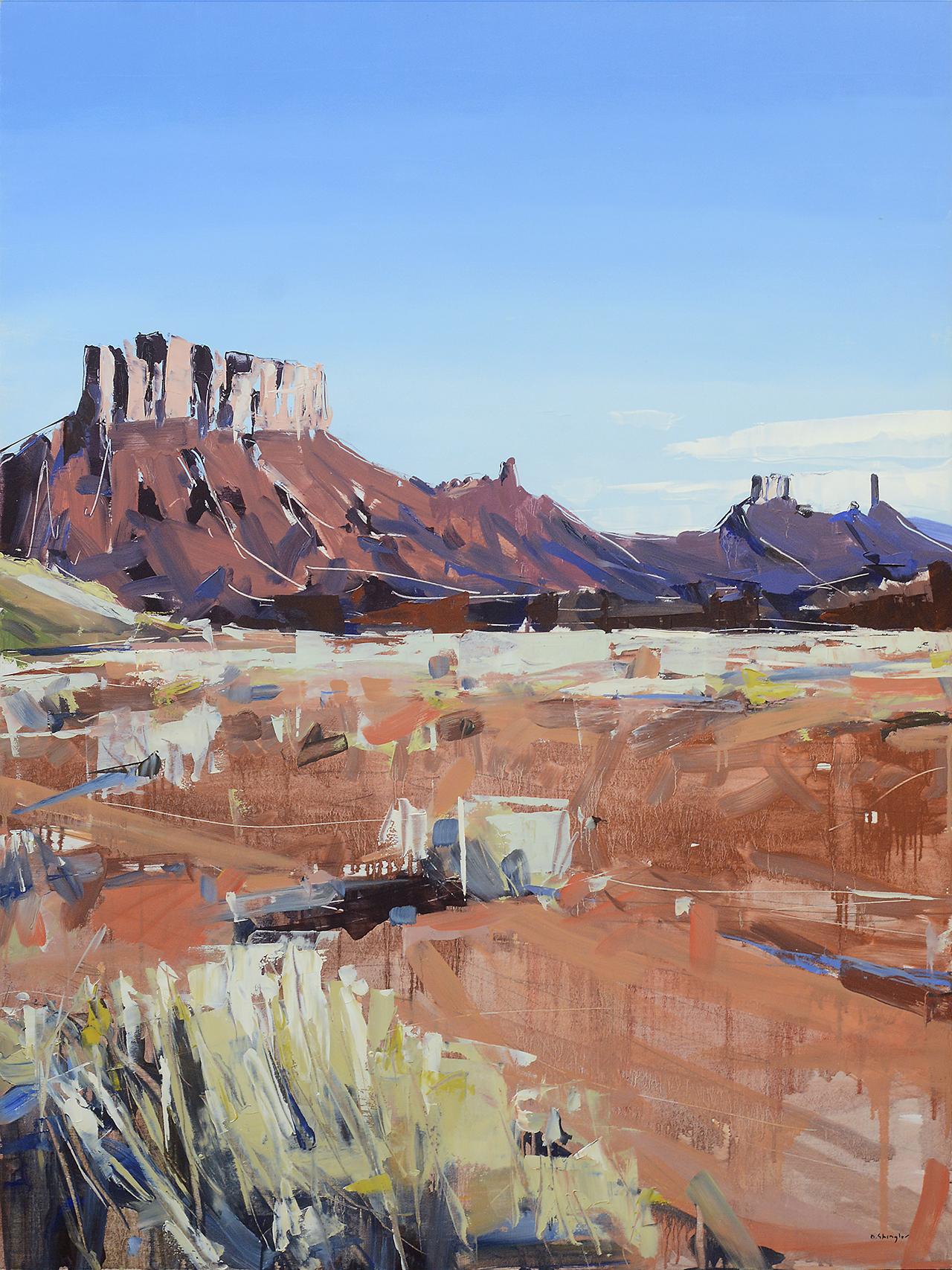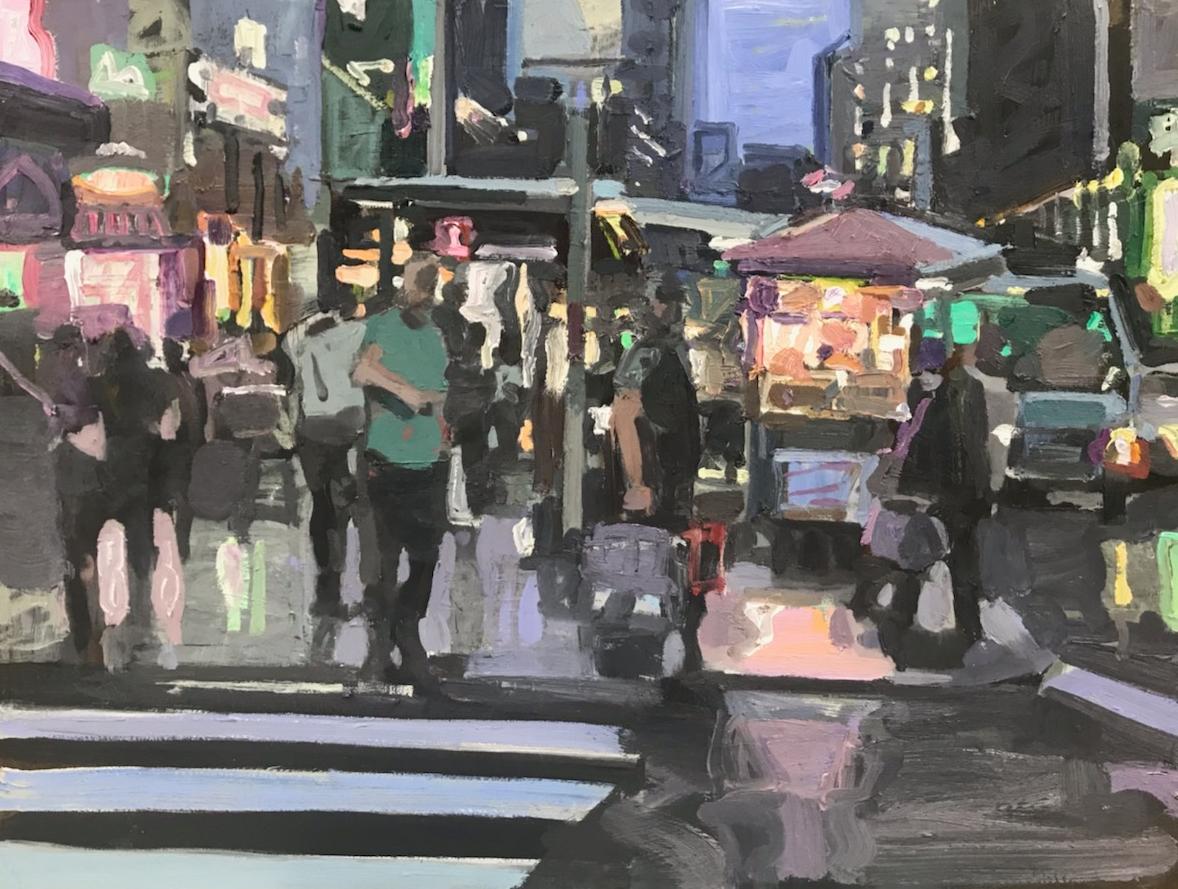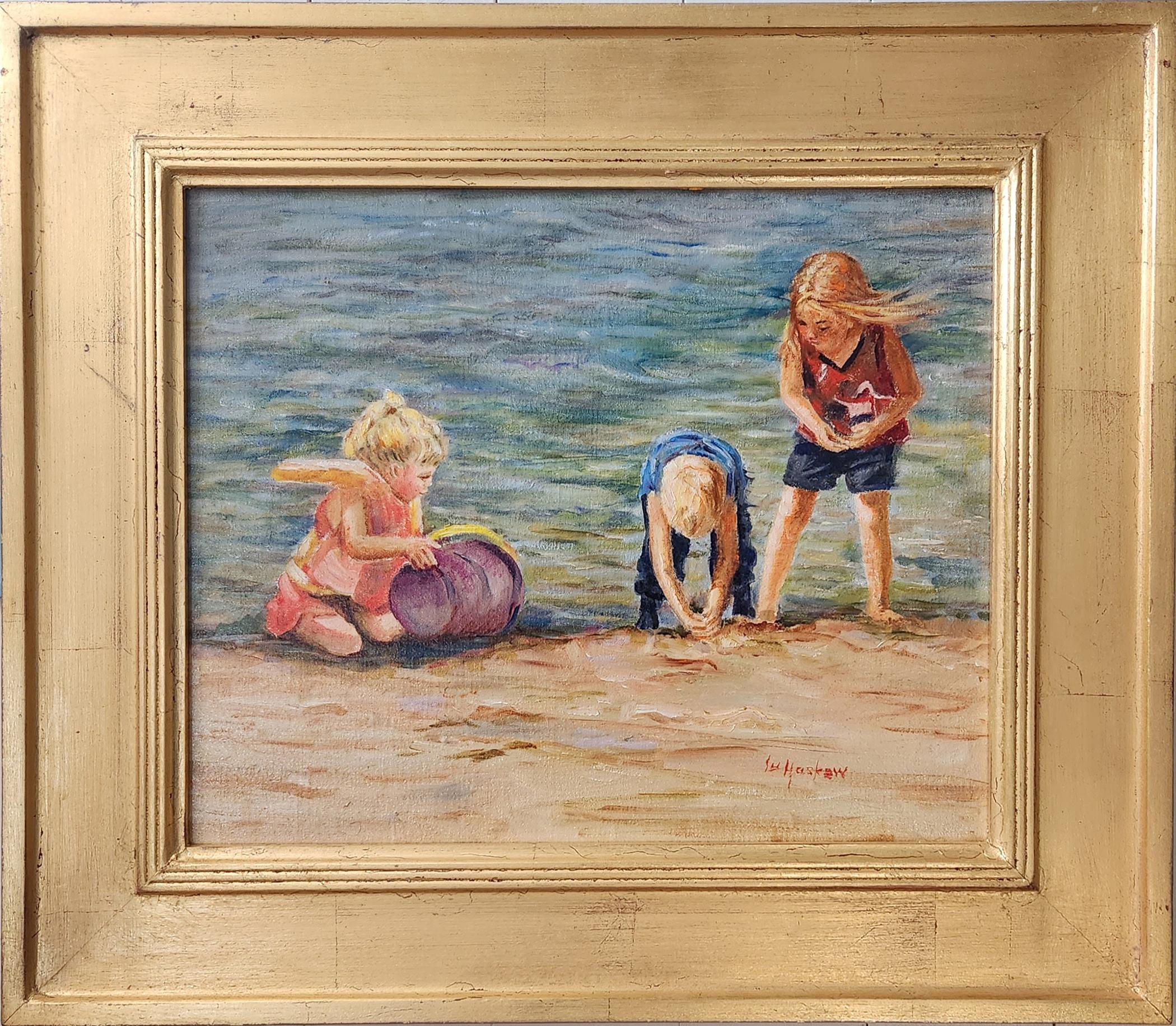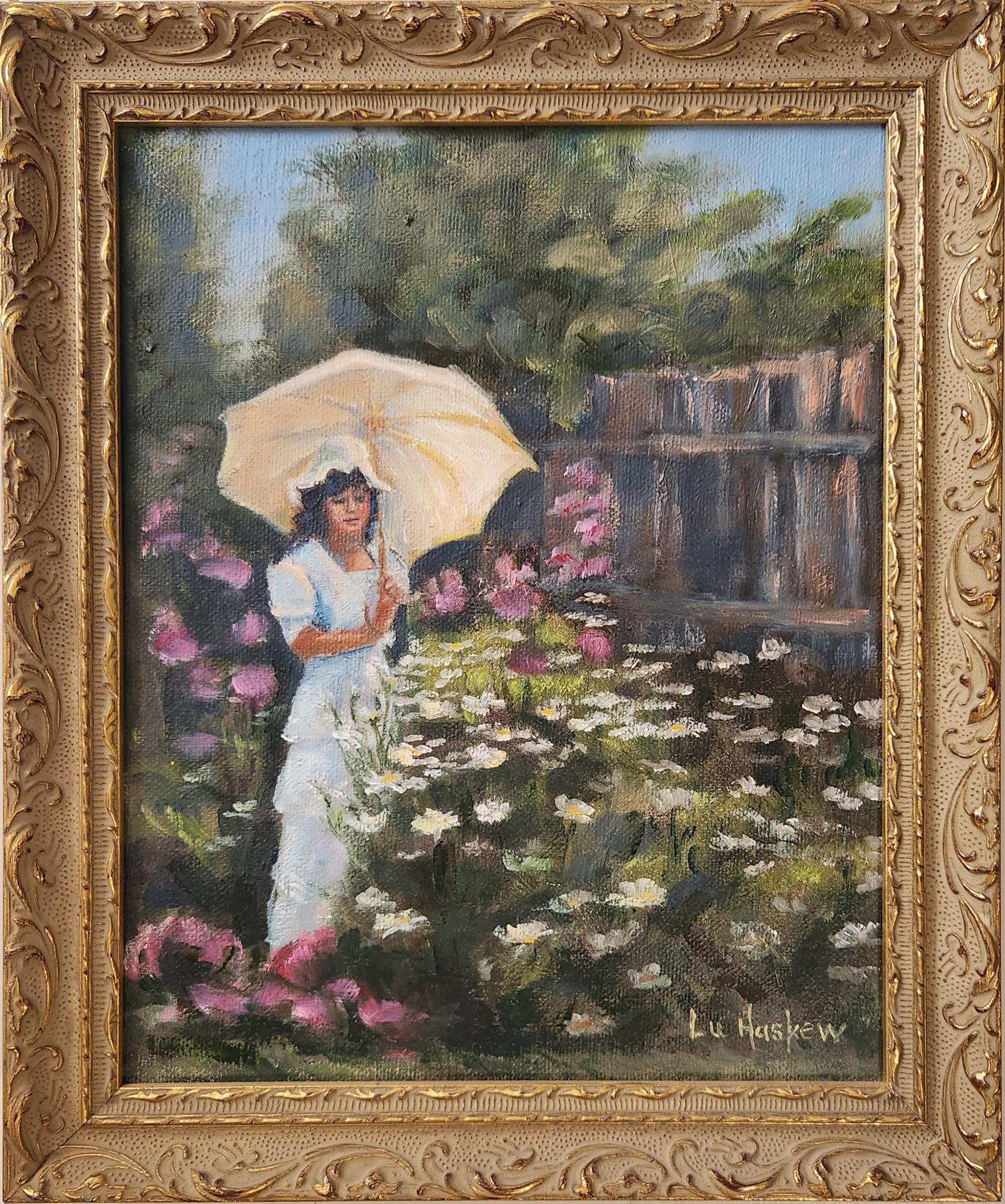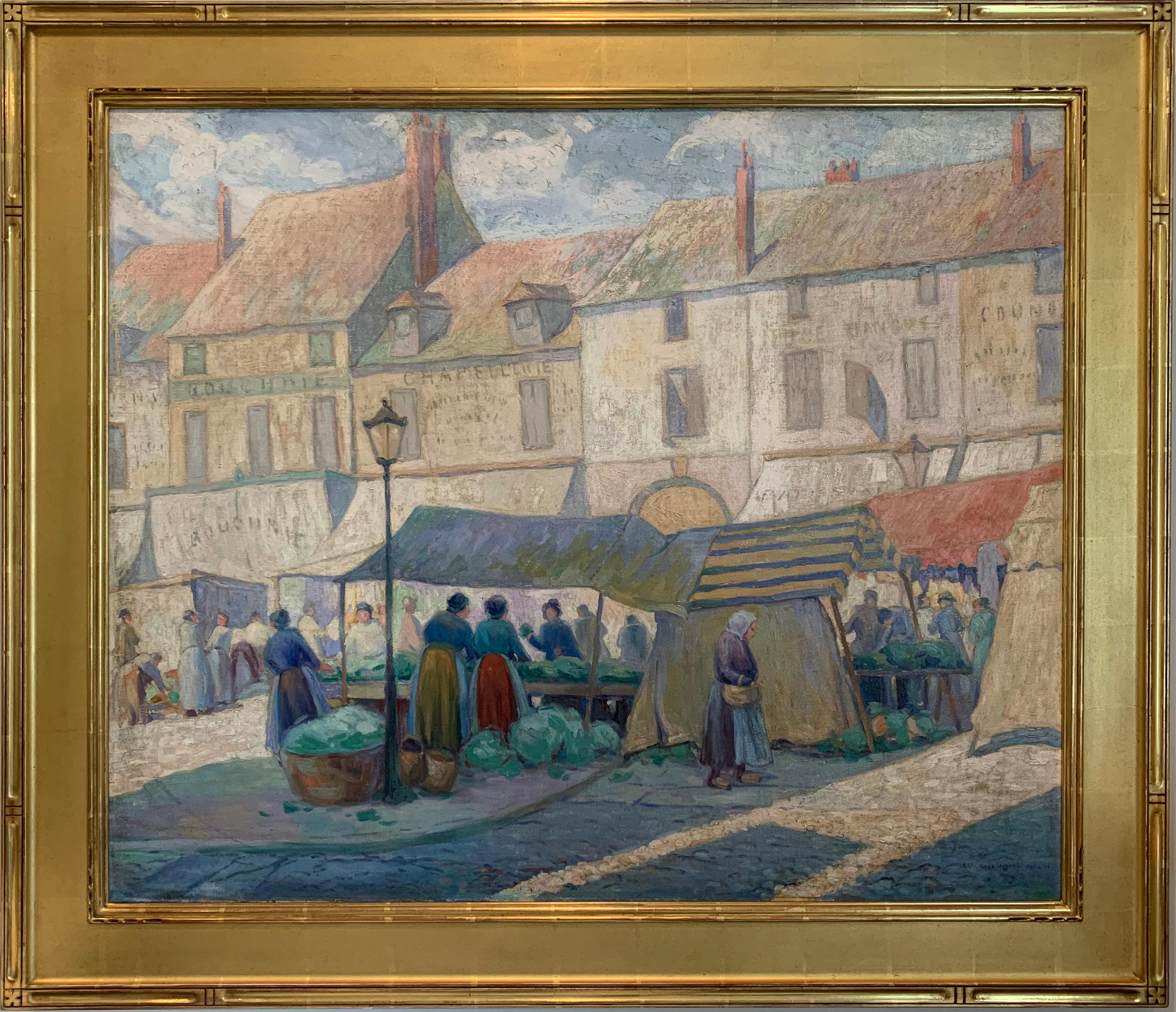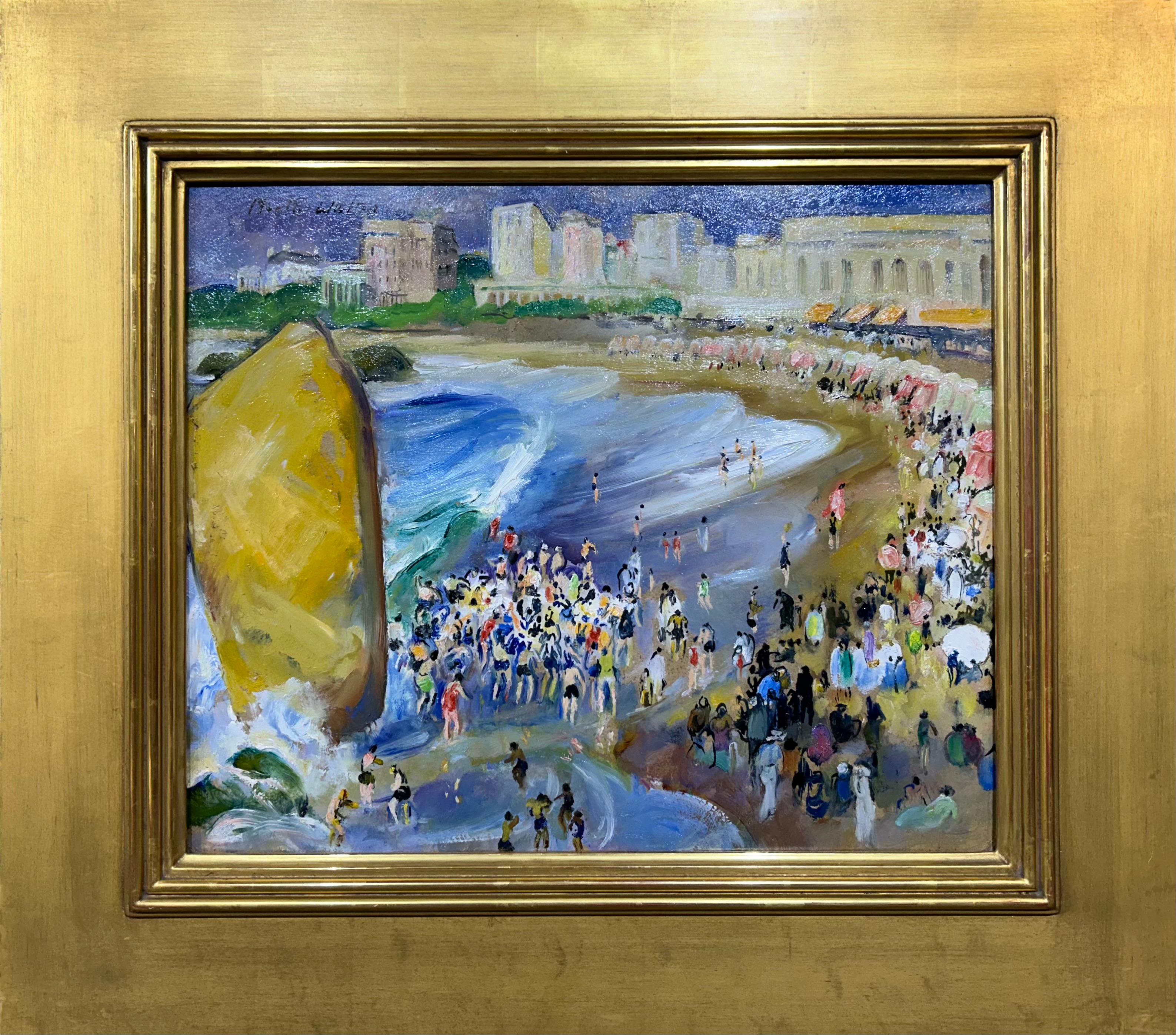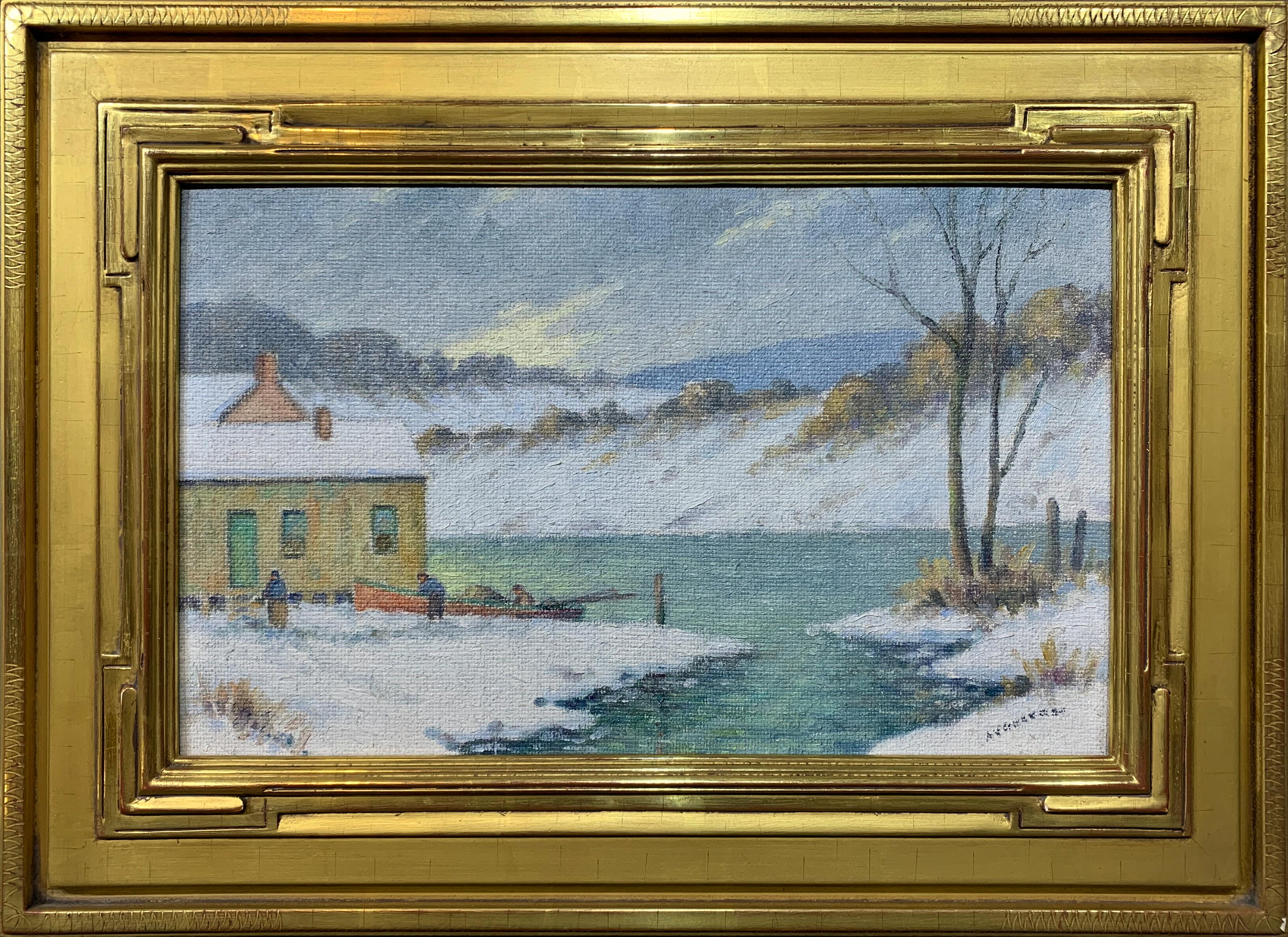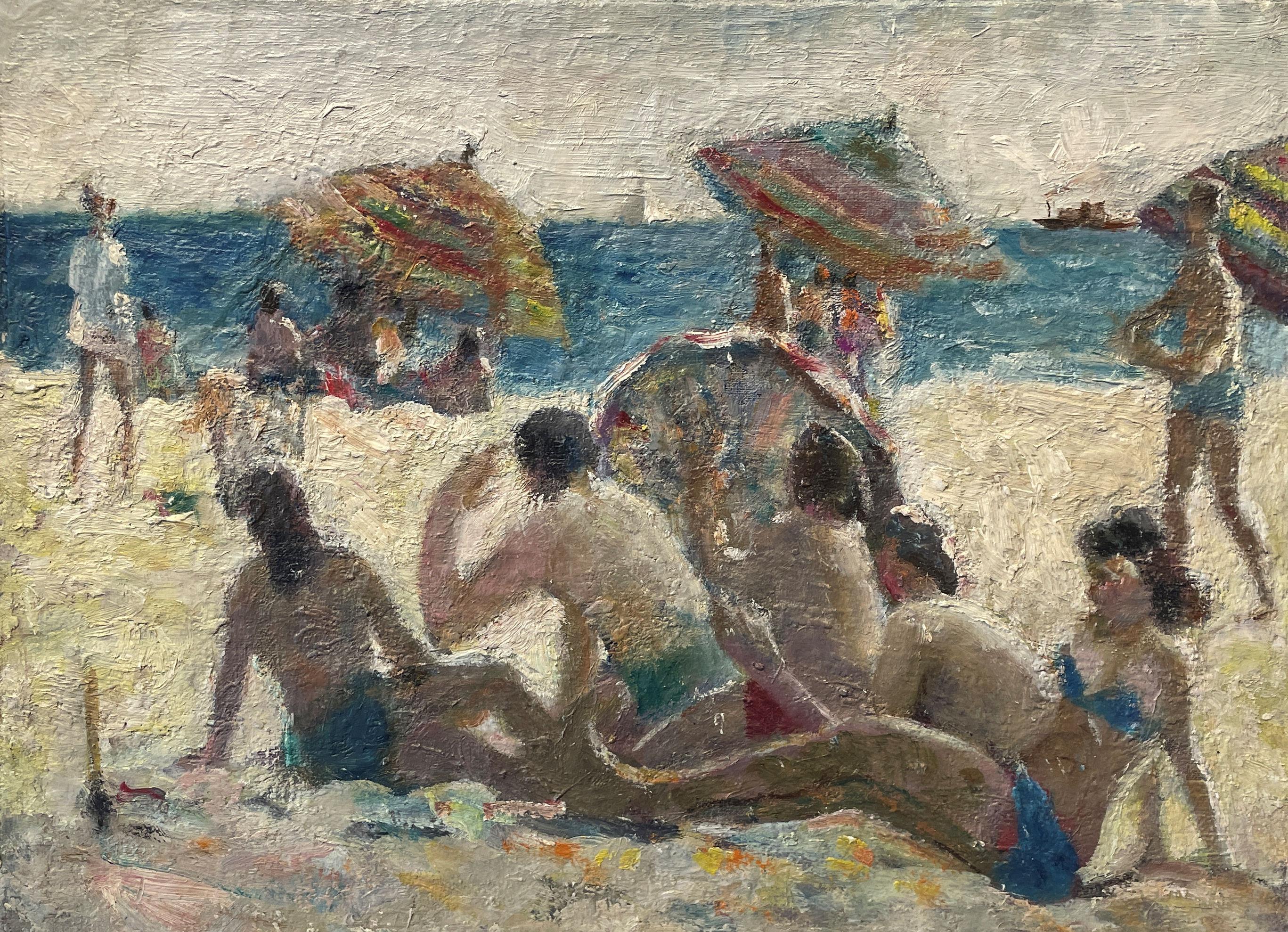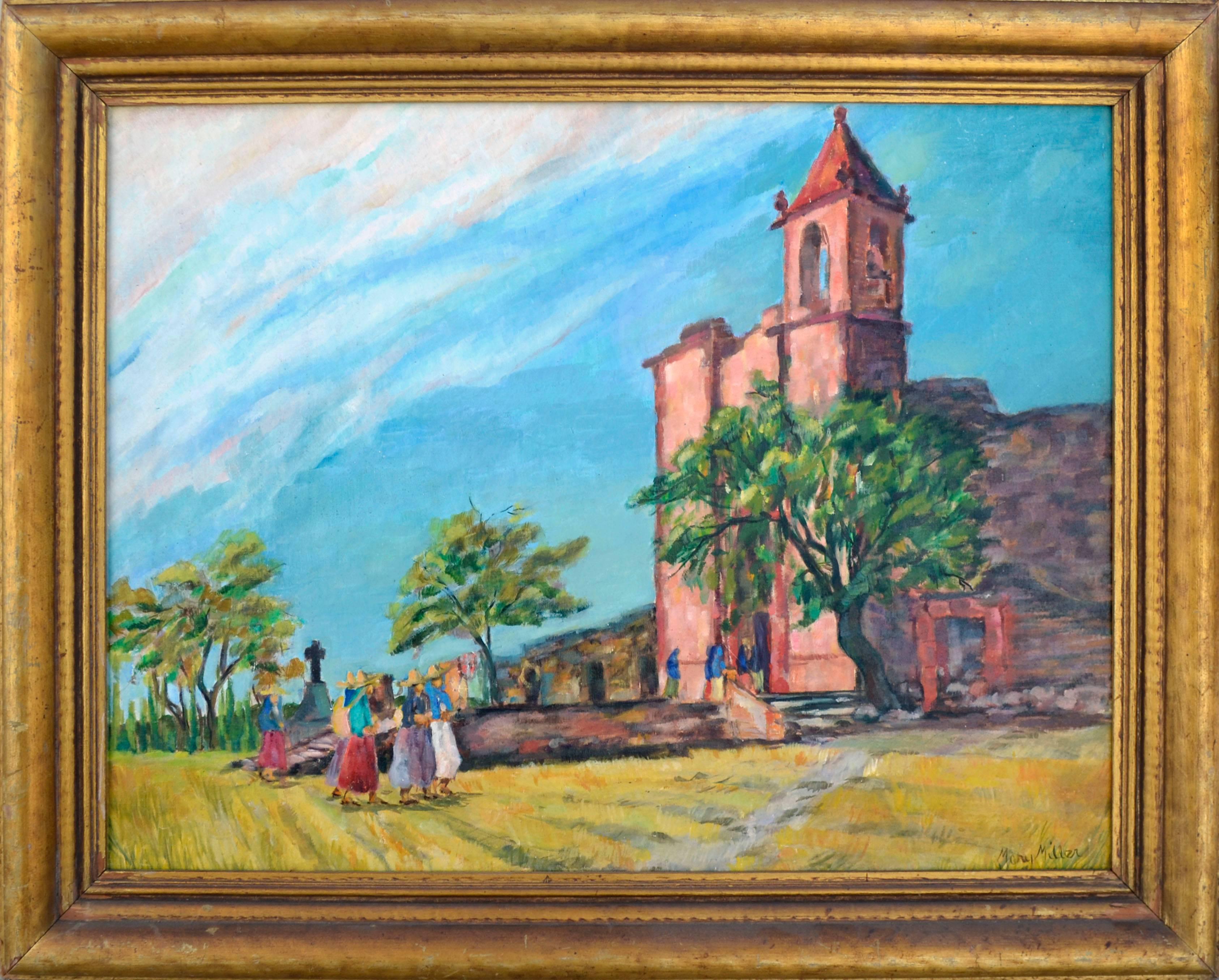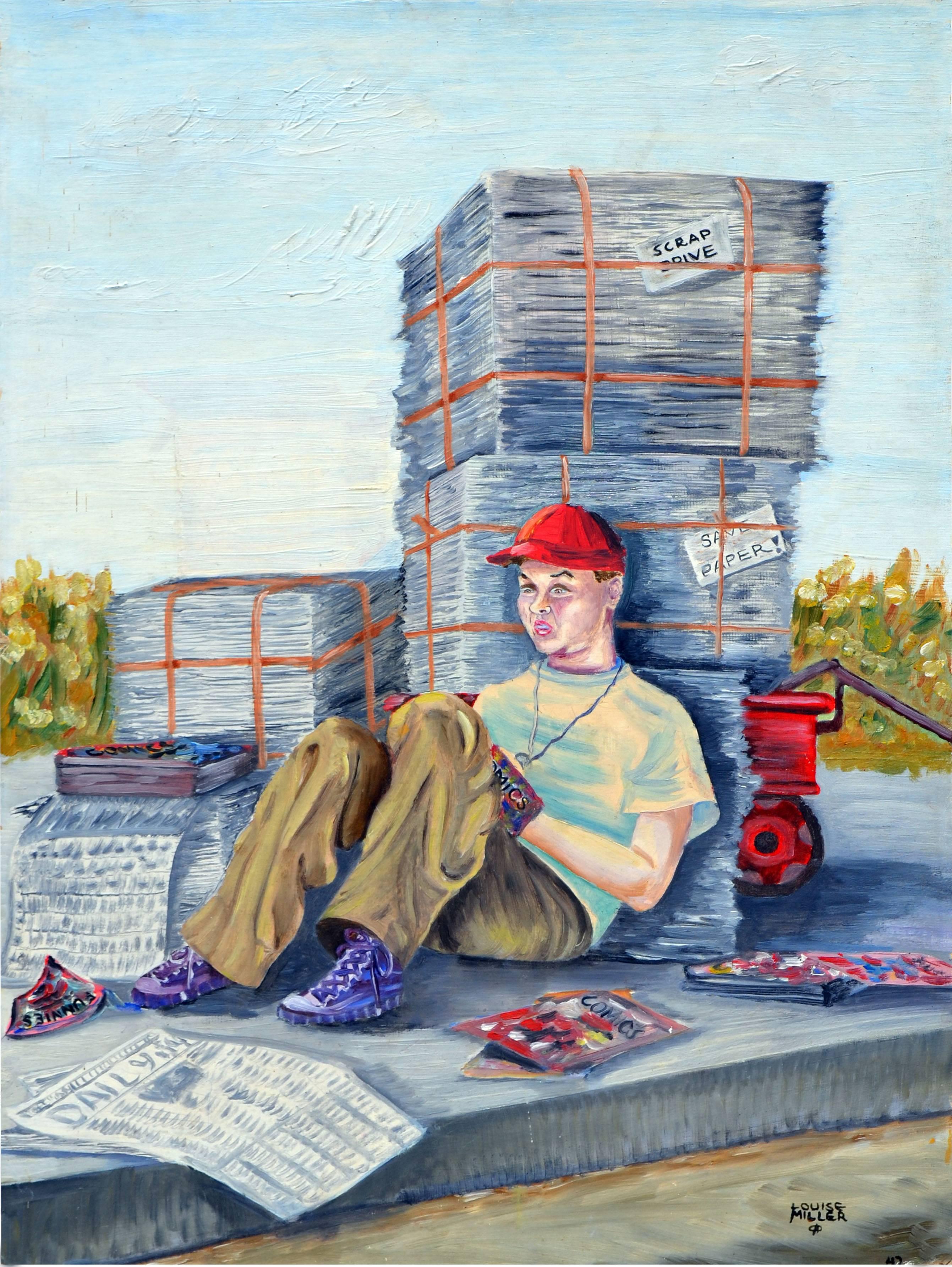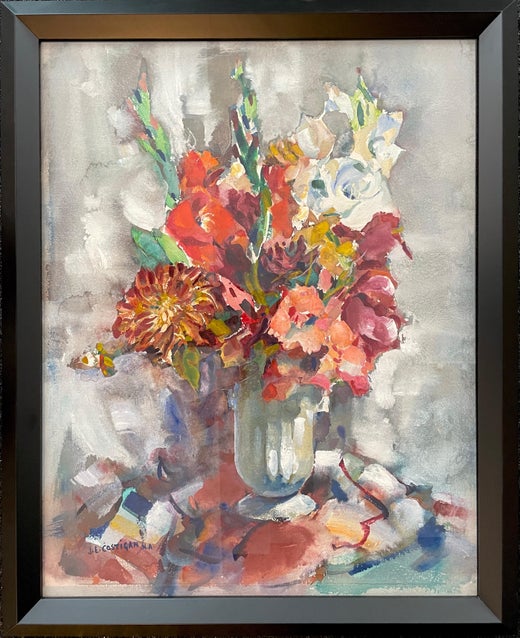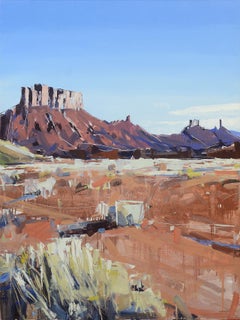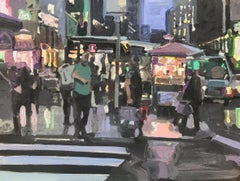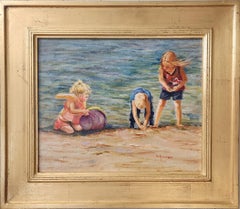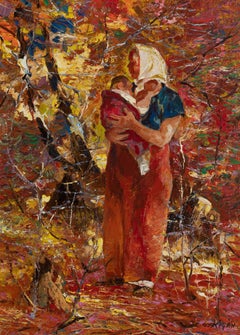
"Mother-Child Autumn Background" John Costigan, Impressionist New York Landscape
View Similar Items
Want more images or videos?
Request additional images or videos from the seller
1 of 8
John Costigan"Mother-Child Autumn Background" John Costigan, Impressionist New York Landscape1947
1947
About the Item
- Creator:John Costigan (1888 - 1872, American)
- Creation Year:1947
- Dimensions:Height: 26 in (66.04 cm)Width: 22 in (55.88 cm)
- Medium:
- Movement & Style:
- Period:
- Condition:
- Gallery Location:New York, NY
- Reference Number:1stDibs: LU1841210495102
John Costigan
A native of Providence, Rhode Island, John Costigan was a skilled landscape and figure painter who disdained portraits because "the subjects want flattering pictures." He was orphaned and raised in New York by his aunt and uncle, the parents of songwriter, George M. Cohan. Mainly self-taught, Costigan studied briefly at the Art Students League and worked as a lithographer of theater posters. From that job he learned the printing processes that he later used in his many etchings. He began making his name in the fine arts in 1920, and throughout the decade, reaped numerous important prizes for his oils, watercolors and prints. He served in the infantry in World War I and supported himself during the Depression with magazine illustration. For about a year during World War II, to remain financially solvent, he worked the night shift as a machine operator in a defense plant while continuing to paint and etch by day. In the late 1960s, he enjoyed a revival of interest in his fine arts talents when more than 50 pieces were borrowed from museums and private collections to be toured nationally in a Smithsonian-sponsored Costigan retrospective.
About the Seller
5.0
Platinum Seller
These expertly vetted sellers are 1stDibs' most experienced sellers and are rated highest by our customers.
Established in 2021
1stDibs seller since 2022
61 sales on 1stDibs
Typical response time: 1 hour
More From This SellerView All
- "The Green Parasol, " Henry Hannig, American Impressionist, Woman in Beach SceneBy Henry HannigLocated in New York, NYHenry Charles Hannig (1883 - 1948) The Green Parasol Oil on canvas mounted on board 6 x 7 3/4 inches Provenance: R.H. Love Galleries, Chicago, Illinois Private Collection, Lake Orion, Michigan Hannig, born in Hirschberg, Germany on 27 February 1883, came to America with his parents at the age of seven. He attended school in the southwest suburbs before the family settled in Chicago. Young Henry enrolled in the Chicago Academy of Fine Arts where Lawton Parker became his mentor. He made ends meet by working in industrial design and illustration. By 1908 he was a pupil in the School of the Art Institute of Chicago where students followed the traditional European drawing curriculum, beginning with the copying of master engravings and drawing after plaster casts, then concentrating on the nude figure. Students worked toward the goal of winning various academic prizes. One of Hannig's fellow students was Louis Ritman...Category
1910s American Impressionist Figurative Paintings
MaterialsCanvas, Oil, Board
- "Brighton Beach" Nathan Hoffman, New York, Sunny Day Landscape ImpressionismLocated in New York, NYNathan Hoffman Brighton Beach, July 31, 1946 Signed, dated, and estate stamped on the reverse Oil on artist's board 10 x 13 1/2 inches Provenance: Esta...Category
1940s American Impressionist Landscape Paintings
MaterialsOil, Board
- "The Beach" Nathan Hoffman, Brooklyn, New York, Sunny Day LandscapeLocated in New York, NYNathan Hoffman The Beach Estate stamped on the reverse Oil on artist's board 10 1/4 x 14 inches Provenance: Estate of the artist Born in Russia, the s...Category
1940s American Impressionist Landscape Paintings
MaterialsOil, Board
- "Elegant Lady in Winter, Trinity Church, New York" Herman Hyneman, Gilded AgeBy Herman HynemanLocated in New York, NYHerman N. Hyneman (1849 - 1907) Elegant Lady in Winter, Trinity Church, New York City Oil on canvas 22 x 15 inches Signed lower right Provenance: Freemans, 2005, Lot 76 Herman N. Hyneman was a noted American portrait and figure painter with ties to both Philadelphia and New York. He was born July 27,1849 to Leon and Adeline Hyneman in Philadelphia. ("Who Was Who in American Art" lists his birth date as either 1849 or 1859, but we have confirmed that the birth date is 1849). Virtually nothing is known about his early years, but given the fact that the family resided in a wealthy section of Philadelphia and the fact that he traveled to Paris to study in the studio of Leon Bonnat when he was but 20 years old, it is presumed that the family was financially comfortable if not well to do. Hyneman exhibited at the Paris Salon in 1879 and 1881, which was quite an accomplishment given his tender age. He returned to the United States in 1882 and after a year in Philadelphia, he established a studio at 58 West 57th Street, New York, NY, where he painted portraits to support himself and scenes of beautiful fair-skinned women walking in the snow to exhibit at major exhibitions throughout the United States. Hyneman exhibited at the the Brooklyn Art Association in 1882, 1883 and 1884 and at the Pennsylvania Academy of Fine Arts in 1883 and 1888. Beginning in 1882 and continuing up until 1905, he exhibited regularly at the National Academy of Design. Despite the fact that he exhibited fourteen paintings at the National Academy over a span of three different decades, he was never elected as a member. In the 1880's his paintings sold for between $100 and $1500, which were substantial sums for that period. Hyneman also exhibited at the Salmagundi Club and the Philadelphia Art Club and was a member of each organization. He won a medal at the American Art Society in 1904 and also exhibited at the Chicago Art Institute. A handwritten label on one of his paintings indicates that he also exhibited in Budapest, Hungary. In 1892, Hyneman married the noted artist Juliet Jolley (aka Jolly), who had previously modeled for him. Thereafter, they shared a studio and on at least one occasion exhibited together. The February 5, 1896 edition of the "New York Times" reported on a "pleasant studio reception" at 58 West 57th Street where the paintings of both Herman and Juliet were shown to members of New York Society including Mr. And Mrs. Edwin Blashfield. At least one of Hyneman's Painting " A Sensation on Wall Street" which depicted a lovely young woman in fur coat with Muff in front of the Stock Exchange, was made into a post card and reproductions of his paintings are known to exist, although not plentiful. At least one etching is known, "Desdemona," which was reproduced in a book by Frederic Stokes. Herman Hyneman...Category
Late 20th Century American Impressionist Landscape Paintings
MaterialsCanvas, Oil
$9,600 Sale Price20% Off - "A Man in His Garden, " Emil Carlsen, Backyard and Barn Impressionist LandscapeBy Emil CarlsenLocated in New York, NYSoren Emil Carlsen (1848 - 1932) A Man in His Garden, 1893 Oil on canvas 28 3/4 x 35 1/2 inches Signed and dated lower right Provenance: The artist [1848-1932] Macbeth Gallery, New ...Category
1890s American Impressionist Landscape Paintings
MaterialsCanvas, Oil
$42,000 Sale Price30% Off - "Sensation in Wall Street, New York" Herman Hyneman, Jewish Artist, Gilded AgeBy Herman HynemanLocated in New York, NYHerman N. Hyneman (1849 - 1907) Sensation in Wall Street, New York, 1903 Oil on canvas 24 x 16 inches Signed and dated lower left Provenance: Roger King, Newport, Rhode Island Herman N. Hyneman was a noted American portrait and figure painter with ties to both Philadelphia and New York. He was born July 27,1849 to Leon and Adeline Hyneman in Philadelphia. ("Who Was Who in American Art" lists his birth date as either 1849 or 1859, but we have confirmed that the birth date is 1849). Virtually nothing is known about his early years, but given the fact that the family resided in a wealthy section of Philadelphia and the fact that he traveled to Paris to study in the studio of Leon Bonnat when he was but 20 years old, it is presumed that the family was financially comfortable if not well to do. Hyneman exhibited at the Paris Salon in 1879 and 1881, which was quite an accomplishment given his tender age. He returned to the United States in 1882 and after a year in Philadelphia, he established a studio at 58 West 57th Street, New York, NY, where he painted portraits to support himself and scenes of beautiful fair-skinned women walking in the snow to exhibit at major exhibitions throughout the United States. Hyneman exhibited at the the Brooklyn Art Association in 1882, 1883 and 1884 and at the Pennsylvania Academy of Fine Arts in 1883 and 1888. Beginning in 1882 and continuing up until 1905, he exhibited regularly at the National Academy of Design. Despite the fact that he exhibited fourteen paintings at the National Academy over a span of three different decades, he was never elected as a member. In the 1880's his paintings sold for between $100 and $1500, which were substantial sums for that period. Hyneman also exhibited at the Salmagundi Club and the Philadelphia Art Club and was a member of each organization. He won a medal at the American Art Society in 1904 and also exhibited at the Chicago Art Institute. A handwritten label on one of his paintings indicates that he also exhibited in Budapest, Hungary. In 1892, Hyneman married the noted artist Juliet Jolley (aka Jolly), who had previously modeled for him. Thereafter, they shared a studio and on at least one occasion exhibited together. The February 5, 1896 edition of the "New York Times" reported on a "pleasant studio reception" at 58 West 57th Street where the paintings of both Herman and Juliet were shown to members of New York Society including Mr. And Mrs. Edwin Blashfield. At least one of Hyneman's Painting " A Sensation on Wall Street" which depicted a lovely young woman in fur coat with Muff in front of the Stock Exchange, was made into a post card and reproductions of his paintings are known to exist, although not plentiful. At least one etching is known, "Desdemona," which was reproduced in a book by Frederic Stokes. Herman Hyneman...Category
Early 1900s American Impressionist Landscape Paintings
MaterialsOil, Canvas
You May Also Like
- "Moab Plateaus" Oil PaintingLocated in Denver, CODavid Shingler's (NC based) "Moab Plateaus" is an oil painting that depicts the vast desert dotted with grasses leading to the towering plateaus of Moab...Category
2010s American Impressionist Figurative Paintings
MaterialsOil, Board
- "City Cruising", Oil PaintingBy Kevin WeckbachLocated in Denver, COKevin Weckbach's (US based) "City Cruising" is an original, hand made oil painting that depicts a bustling city street and sidewalk , in early evening, filled with cars and walking c...Category
2010s American Impressionist Landscape Paintings
MaterialsOil, Board
- Summer Fun, 12x14" oil on boardBy Lu HaskewLocated in Loveland, COSummer Fun by Lu Haskew Oil Painting of kids at play on the beach 12x14.5" image size 15x18.5" framed Shipping price includes the custom packing necessary for safe transport of fine...Category
Early 2000s American Impressionist Figurative Paintings
MaterialsCanvas, Oil, Board
- In the Garden, 10x8" oil on boardBy Lu HaskewLocated in Loveland, COIn the Garden by Lu Haskew Oil Painting of woman with an umbrella in a backyard garden 10x8" image size 14x12" framed Shipping price includes the custom packing necessary for safe t...Category
Early 2000s American Impressionist Figurative Paintings
MaterialsCanvas, Oil, Board
- Market in Paris, European Town Scene with Figures, American Impressionist, 1922By Albert Van Nesse GreeneLocated in Doylestown, PA"Parisian Market" is a European townscape and market Scene by American Impressionist painter Albert Van Nesse Greene, featuring towns people at a busy outdoor market. The painting i...Category
1920s American Impressionist Landscape Paintings
MaterialsOil, Board
- Bathing by the Big Rock, American Impressionist Landscape and Beach SceneBy Martha WalterLocated in Doylestown, PAThis Impressionist beach scene and landscape was painted by American artist Martha Walter. The 15 x 18 oil on board is framed in a 22K gold reproduction frame and is signed "Martha W...Category
Early 20th Century American Impressionist Landscape Paintings
MaterialsBoard, Oil
Recently Viewed
View AllMore Ways To Browse
New York Etching
Etchings Of New York
Johns Island
Vintage Landscape Background
Vintage Landscape Backgrounds
Framed Impressionist Portrait Landscape
George M
Vintage Landscape Illustration
Parents And Child
War Machine
Native American Warror
Rhode Island Landscape Paintings
Mother Child Oil
Oil Painting Mother Child
Mother And Child Oil
Mother And Child Oil Paintings
American Mother And Child Painting
Poster Child
